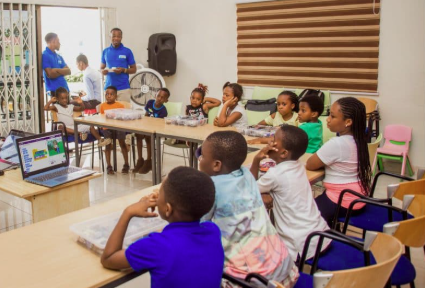As education becomes more connected and collaborative, social learning platforms are playing a transformative role in how students engage with knowledge. These platforms go beyond traditional classroom instruction by encouraging peer interaction, content sharing, and active participation in learning communities. Whether used for formal education, tutoring, or lifelong learning, social learning platforms offer a dynamic and supportive environment that complements traditional teaching methods. Here’s a look at some of the most influential platforms reshaping the educational experience.
1. Edmodo
Edmodo offers a secure, social network-like experience for students, teachers, and parents. Educators can share resources, assign work, give feedback, and foster classroom discussions in a familiar interface. Students benefit from a safe space to collaborate and ask questions.
2. Padlet
Padlet allows students to post thoughts, ideas, images, and videos on a shared digital wall. Teachers use it for brainstorming, interactive timelines, and multimedia projects. Its visual and flexible format makes it especially effective for creative and collaborative learning.
3. Flip (formerly Flipgrid)
Flip is a video discussion platform where students respond to prompts by recording short videos. It promotes reflection, speaking skills, and peer feedback. Teachers can moderate discussions, spark conversations, and build inclusive learning communities.
4. Piazza
Piazza supports collaborative Q&A, often used in higher education. Students can ask and answer each other’s questions while instructors oversee the conversation and contribute insights. This model encourages student-driven inquiry and deeper engagement with course material.
5. Google Classroom
Google Classroom integrates with Google’s suite of tools to support communication, file sharing, and announcements. Its comment and stream features foster peer interaction, and its simplicity makes it widely adopted across grade levels.
6. Discord (for Education)
Originally a gaming communication tool, Discord is increasingly used in education for group discussions, study rooms, and project collaboration. Teachers and students can create organized channels, host video calls, and use bots for quizzes and polls.
7. Schoology
Schoology combines LMS capabilities with social features like news feeds, discussion boards, and group workspaces. It offers educators tools to manage instruction while supporting student communication and collaboration.
8. Moodle with Forums and Wikis
Moodle, an open-source learning platform, includes collaborative tools such as discussion forums, group projects, and wikis. It’s widely used in higher education and customizable for various instructional models.
9. Peergrade
Peergrade facilitates structured peer assessment. Students anonymously evaluate each other’s work, offer constructive feedback, and reflect on their own learning. This process promotes critical thinking and accountability.
10. ClassDojo
ClassDojo emphasizes classroom culture by allowing students and teachers to share updates, photos, and achievements. It helps build community, track behavior, and encourage positive reinforcement in younger learners.
Benefits of Social Learning Platforms
- Promote collaboration and communication skills
- Encourage active participation and engagement
- Foster peer-to-peer learning and support
- Extend classroom learning into digital spaces
- Build confidence through discussion and feedback
Conclusion
Social learning platforms are redefining how education is delivered and experienced. By leveraging peer interaction and digital connectivity, these tools support more inclusive, engaging, and student-centered learning. As educational needs evolve, the role of social platforms will continue to grow, making learning more collaborative and meaningful for all.


